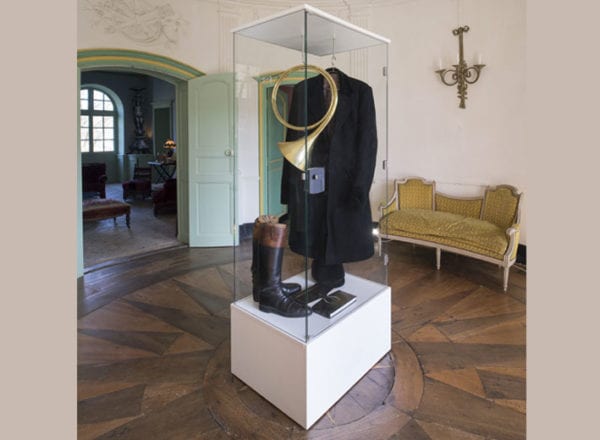


Karin Sander
B. 1957 in Bensberg (Germany)
Lives and works in Berlin (Germany) and Zurich (Switzerland)
She is represented by the Esther Schipper Gallery (Berlin) and Nächst St. Stephan Rosemarie Schwarzwälder Gallery (Vienna).
Karin Sander is a conceptual artist and her works—installations, architectural interventions, 3D photographs, paintings—typically develop from specific protocols. They create a kind of distancing or detachment from reality: for example, Body Scans are sculptural representations of individuals in the form of 3D photographs. The use of this method since the late 1990s—developed specifically for the Body Scans series—allows the artist to question the notion of the objectivity of the image. More generally, Sander’s approach questions the contexts and conditions of the systems of production and dissemination of art, such as the museum, the art centre or public space. Wallpieces for example, are painted murals realized not by the addition but rather by the subtraction of materials. The coating of the walls is polished until it has a shimmering appearance, visible depending on the intensity of the light. Another series, the Patina Paintings, called Gebrauchsbilder in German (the term implies that the canvases are objects to be used in response to a need), were created for the places in which they were hung. The canvases were left untreated and unpainted, and were brought to a specific location where they were exposed for a given period of time. They absorbed the atmosphere of the place and thus reproduced a kind of ‘patina’. Through her work, the artist reveals the potential poetic dimension that exists in the everyday objects around us.
KS320
Glass, wood, metal, wheels
200 x 60 x 80 cm
Unique (from a series of 20 single vitrines)
Acquisition in 2015
As is often the case with Karin Sander, the artwork exists as a material object with a specific use or purpose, which is then transformed, altering the perception that one has of it. This piece consists of an individual glass locker, designed in collaboration with Holzer Kobler Architects, for an intervention in Dahlem in 2013. Made of glass, the locker reveals its contents to everyone. In addition to its form, the main characteristic of the work is that it is positioned in the exhibition area, and not in the hall or the basement of the museum, as one might expect. The locker’s utilitarian function—often availed of by visitors to museums—allows the structure to become a participatory artwork, showcasing the clothing and accessories that are placed inside it. Through this reversal effect, a functional item of furniture becomes the subject of an artwork in itself, entering the realm of anthropology and bringing into the limelight that which is ordinary and usually goes unnoticed. By placing one’s things inside, the visitor can, in a conscious fashion, arrange a composition that reflects his/her personality and tastes, thereby creating a kind of ‘exhibit’. Depending on the age and gender of the person using the locker, but also on the seasons and the context in which the work is presented, a range of portraits begin to emerge, revealing individual identities and cultural references, the whole imbued with a sense of normality and the banal.